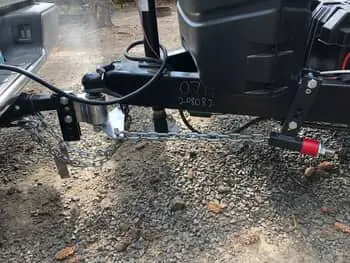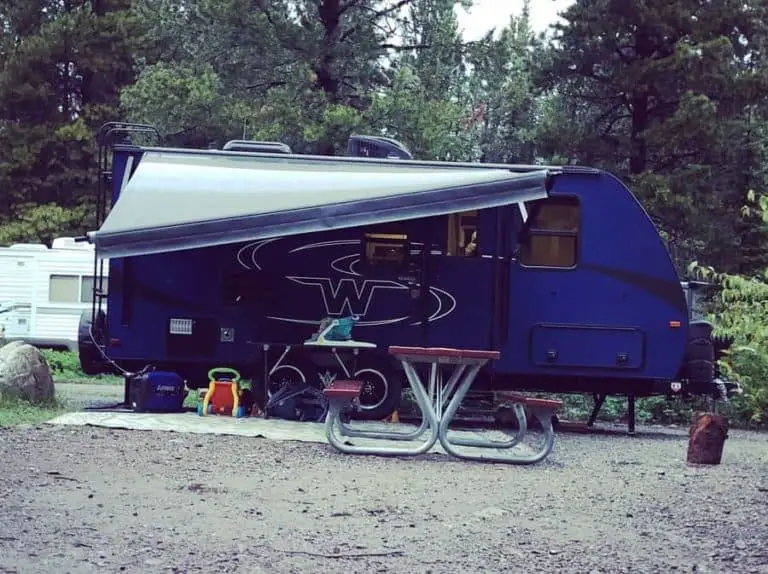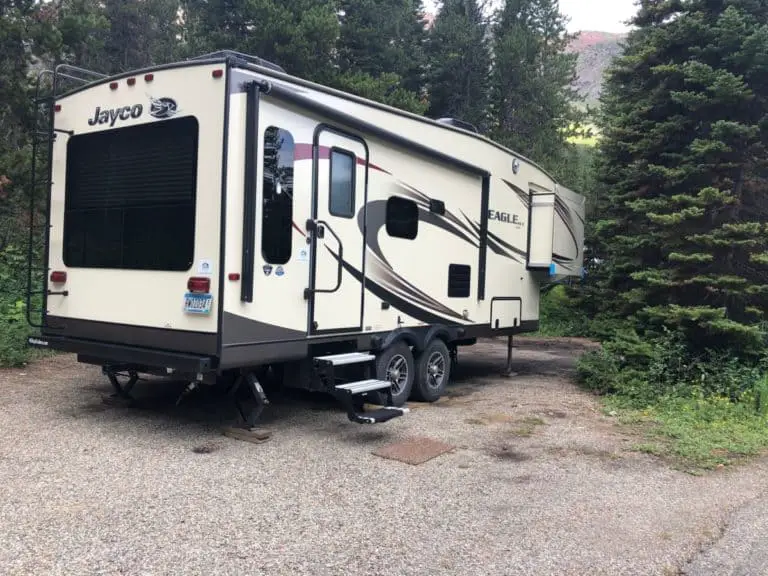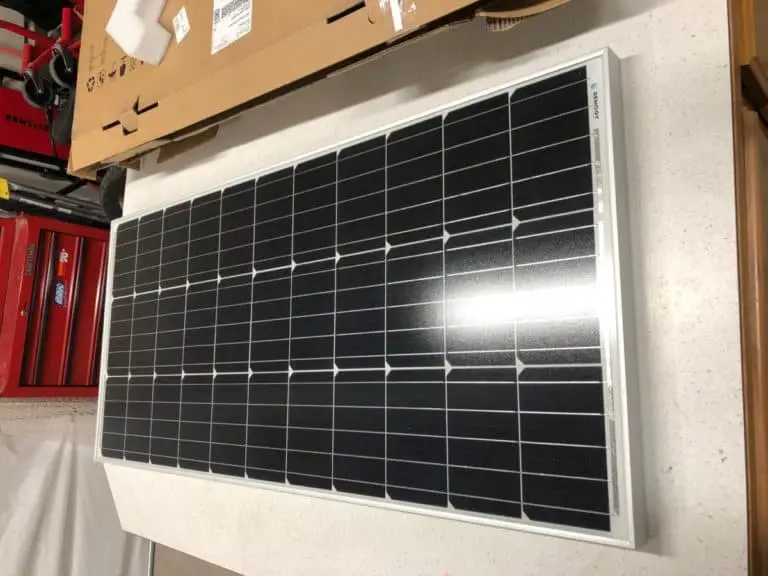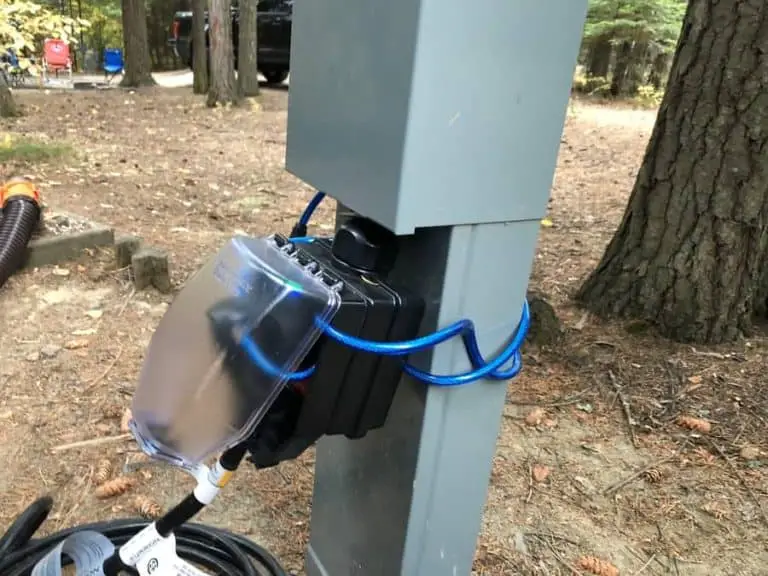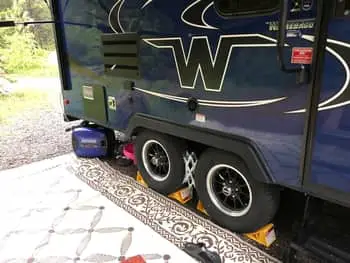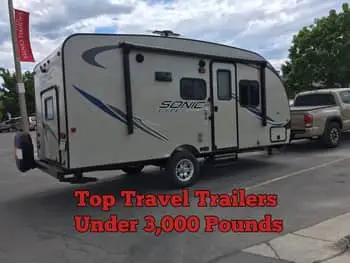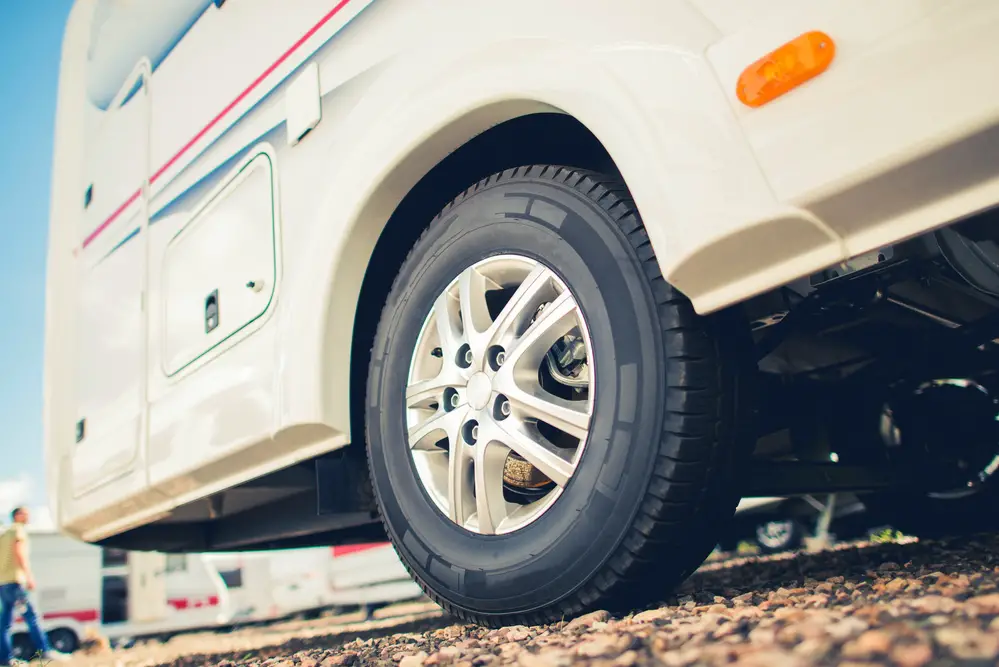What is the Best Weight Distribution Hitch? 2023 Guide
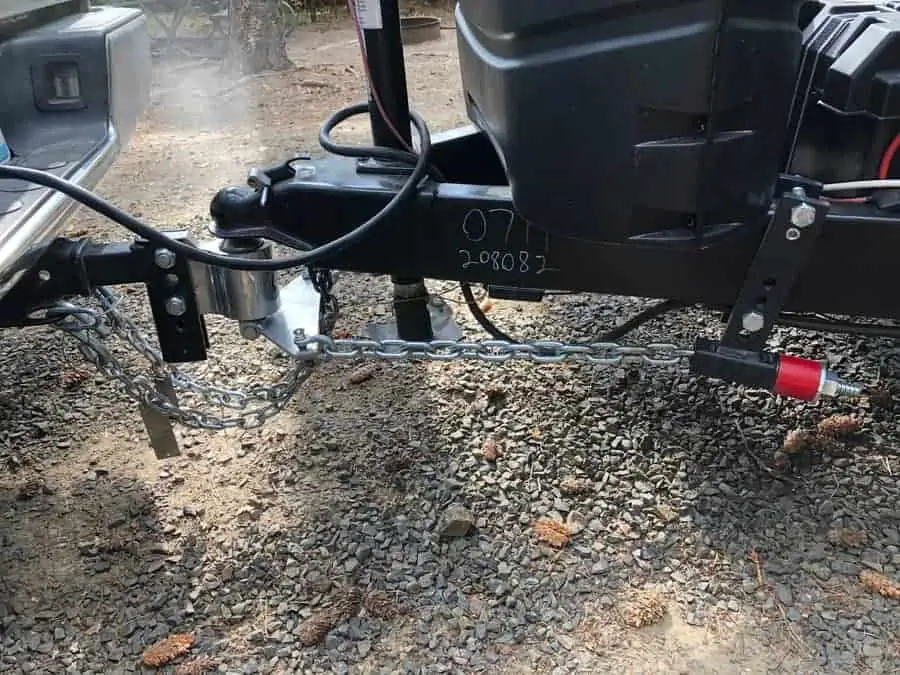
We had heard of weight distribution hitches way before we decided to purchase our RV. We came across them when researching travel trailers, as well as used one the first time when we rented a travel trailer. On the trailer we rented, there was a bar type hitch installed. It worked great, but the squeal whenever we turned and lack of being able to take it off or put it on at an angle was hard and even impossible for us. We later found out that all you have to do is hitch up, then pull the trailer straight then put the weight distribution bars on. Or vise versa, take the weight distribution bars off before you pull into your site. Just a little tip that would have saved us a lot of headache.
This experience gave us just a bad enough taste in our mouth to never want a bar style. After reading many reviews and doing the research ourselves, this may have been a cheaper brand, or not lubricated properly, but I do not recall the actual brand which was installed. If you are questioning if your travel trailer needs to be level while towing, our post about leveling your travel trailer while towing explains all of the answers you would ever need to know.
We have found many brands of the bar style hitch to have glowing reviews and happy users throughout the country, we just had a bad experience with an unremembered brand.
Our favorite hitch we found through our research and purchased and constantly use on our travel trailer, is the Andersen Weight Distribution No Sway Hitch. We like it because it is lighter, has the ability to adjust with a simple socket wrench while attached to the trailer, as well as the ability to hook and unhook at any angle. Just because we like this chain style, doesn’t mean the bar styles are inferior. The bar style hitches have been around for decades and provide great user experience as well as work just as well.
Many travel trailer users will find that they need a weight distribution hitch for their tow vehicle. They may determine this before they even own a travel trailer, or may determine this from a white knuckle driving experience. We never leave home without using our weight distribution hitch. Even if your trailer does not give you extensive squatting on your truck, a weight distribution hitch with sway control will give you the added security of reducing sway and increasing vehicle control. We have done our research and found four of the best weight distribution and sway control hitches on the market today based on actual user data.
We have scoured several forums, reviews, YouTube videos, and had first hand experience and have produced the top 4 you should consider when you are purchasing your next weight distribution hitch.There are two types of hitches on our list, Andersen’s No Sway chain style, as well as three other bar style hitches.
Do I need a weight distribution hitch?
To determine if you need a weight distribution hitch, read and answer these questions below with a yes or no.
- Does your trailer weigh over 50% of what your tow vehicle weighs?
- Does the rear of your tow vehicle lower when your trailer is hitched?
- Does your trailer wander, or get erratic when a semi drives by or large truck?
- Does your vehicle manufacturer recommend a weight distribution hitch for higher towing capacity or higher tongue weight?
- Do you worry about horror stories of trailers swaying and causing an accident?
If you answered yes to any of the above questions, you will need a weight distribution hitch. All of the hitches we recommend include sway control. A sway control hitch may just be a bit more money than a non sway control hitch, but this hitch provides with an extra layer of security while towing your trailer and the piece of mind with the safety of your loved ones in your tow vehicle.
What is a weight distribution hitch?
A weight distribution hitch is a hitch which connects your vehicle to your travel trailer. This style of hitch reduces the weight from the tongue of the travel trailer on the rear of the vehicle and transfers it to the front wheels.
Without a weight distribution hitch, the rear of the vehicle may sag lifting the front wheels. With front wheels lifted, you will encounter reduced braking and steering capabilities. A weight distribution hitch solves this problem as well as can provide sway control if you find your trailer sways back and forth when passing a large vehicle or when you are cornering.
What is trailer sway?
Trailer sway is no joke. We have encountered it once in our travels, and luckily our hitch solved the problem before it became a disaster. Trailer sway is a very dangerous thing that can happen when your trailer starts to sway back and forth.
Unless you have sway control and know how to stop sway, this can lead to a very dangerous situation that can cause an accident if your trailer sways into the next lane or even causes your tow vehicle to lose control.
It is recommended to lift your foot off the accelerator and not try to counter steer in case of sway. Sway can be prevented with properly loading your trailer as well as installing a weight distribution hitch that provides anti sway control.
Top 4 Weight Distribution Hitches
Now lets get into the top 4 weight distribution hitches we recommend that include sway control.
Andersen No Sway WD Hitch
The Andersen No Sway hitch is our favorite hitch we have found on the market today and is the one we currently use and are very fond of. We have used one other bar style hitch, but found that we did not like the added weight of the bars as well as springing them up. With the Andersen, you can hitch up or unhitch in any direction as well as use the hitch without weight distribution for short periods. The Andersen hitch is also about half the weight of other styles while providing great sway control.
Weight distribution on the Andersen is provided by the chain mechanism which transfers weight from the rear of the truck to the front tires. This chain mechanism can be instantly adjusted by tightening the bolts at the end of the chain for additional weight distribution. Andersen has also been successful at making this hitch provide no bounce by utilizing poly bushings when going over curbs or speed bumps. Sway control is established by a brake pad like material which holds the ball in place. This ball needs no grease as it moves with the trailer. The heavier the tongue weight, the more sway control you will have.
Pros
- Half the weight of others
- Can hook up in any orientation
- Can unhitch in any orientation
- Provides great sway control
- Makes no noise
- Hitch ball included
Cons
- Costs a bit more than others
Husky Centerline
The Husky Centerline hitch was our number 2 pick when we researched hitches as it had good reviews as well as available locally at our trailer dealer. It made it to the number 2 position from great reviews and the price point was a bit less than the Andersen at the time.
This is a traditional bar type hitch which will need grease on the hitch bars as well as the ball mount. This hitch provides weight distribution by using the metal bars as springs to transfer weight from the rear of the vehicle to the front wheels. These highly tensioned springs also act as sway bars from the friction they are under that they use to slow the trailer from swaying. This hitch will begin to squeel when making turns due to the high friction. Greasing these connections can help, but will not create a silent hitch.
Pros
- Hitch ball included
- Washer style tilt head to provide many adjustments
- Provides weight distribution
- Provides sway control
- Has been in production many years
Cons
- Will need hitch ball grease
- Will need tension bar grease
- Heavier
- Will require bars to be stored when not in use
- Can be noisy
- Need to be straight to unhitch
Equal-i-zer Weight Distribution Hitch
The Equal-i-zer hitch was another unit which was on our hit list due to the 4 point sway control. Equal-i-zer has been in business for over 70 years, and provides a lifetime warranty on their product.
This hitch is also a bar style hitch which provides 4 points of contact for sway control. The Equal-i-zer design has been around for several decades and is a proven concept. This unit has glowing reviews from several trailer users. This hitch uses spring loaded bars to transfer weight through the hitch to the front of the vehicle. The Equal-i-zer Hitch is easy to install in four steps: Back up trailer, couple hitch ball, raise trailer with the tongue jack, swing the weight distribution bars and lock in place.
Pros
- 4 point sway control
- Weight Distribution
- Lifetime Warranty
- Proven Design
- Allows for tight turns
Cons
- Hitch Ball must be purchased separately
- Will require lubrication
- Heavier
- Will require tow bars to be stored when not in use
- Can be noisy
Blue Ox SwayPro
The Blue Ox SwayPro hitch is another bar style hitch. We have a pattern with these hitches on our list. Actually the bar style is a proven style that has worked successfully for decades. The only difference is this hitch uses chains to attach the spring loaded bars to the travel trailer frame. This design helps center your trailer and actually prevent sway from happening.
The Blue Ox evenly distributes weight from the rear of the vehicle to the front of the vehicle helping provide control to the front tires. This unit is made in the USA and requires no pins or clips for using.
Pros
- Backup without disconnecting
- Interchangeable Spring Bars
- Limited Lifetime Warranty
- Low noise as does not use friction bars
- 2 Grease zerks installed
Cons
- Hitch ball sold separately
- Need to store bars when not in use
- Cost is higher than others
- Heavier
Must Have Hitch Accessories
When purchasing your trailer hitch, you may want some accessories to go with it. We have some great reccomended accessories below, but if you are looking for more, read our post on towing must haves.
Hitch Lock
You want to lock your hitch to your vehicle so someone doesn’t have a simple way to walk up, remove a pin and walk away with your expensive weight distribution hitch. We have found this simple hitch lock to be one of our favorites.
Weight Distribution Hitch Carrier
A hitch carrier makes it easy to carry your hitch around by providing a handle as well as preventing any grease or debris from getting on your clothes. We prefer this hitch carrier as it is one of the top as reviewed by users as well as makes carrying your hitch much easier.
Trailer Coupler Lock
A coupler lock is good accessory to have to prevent your trailer from getting stolen, we use this model and have had good luck. Not only do we use this lock while our trailer is in storage, but we install it while in our driveway as well as at the campground. We have it on us at all times, so why not install it.
Weight Distribution Hitch Storage
If you do not want to store your hitch in your trailer or have extra storage in your tow vehicle, consider this storage method to be one of the best as it allows the hitch to be stored on the tongue of the vehicle out of the way.
Safety Chain Storage
Keep your chains from hitting the ground while towing by using this nifty holder which will keep them off of the asphalt and out of the mud.
Weight Distribution hitches explained
The tow vehicle as well as your travel trailer (boat trailer, horse trailer, or any other trailer) need to be level with each other to provide equal weight distribution on the tow vehicle and trailer.
A weight distribution hitch applies upwards pressure to the receiver which moves weight to the front vehicle wheels and takes weight off the rear. This gives greater steering response as well as better vehicle weight distribution as not to overload your rear axle or cause erratic vehicle handling. Breaking on your vehicle as well as steering response can suffer if you do not have proper weight distribution on your travel trailer and tow vehicle.
Can I add Sway Control to my Current Hitch?
Sway control can be added to travel trailers with normal hitches or hitches with weight distribution and no sway control. This added sway control will work to prevent sway, but does not help bring back your trailer to center like in some of the hitches above. These are also prone to making lots of noise.
These sway controllers attach to the frame of the trailer and the hitch. There is a knob that is tightened to provide lots of friction that keeps the trailer from swaying. It also holds that friction when your trailer is out of line making it harder to come centered but when you tow forward the unit straightens out.
This style is better than nothing, but it is best to have a hitch designed with sway control in mind to work together with the design of the weight distribution qualities.
How Much can my Vehicle Tow?
To find out how much your vehicle can tow, check out these tow guides over at trailerlife.com. This is the most comprehensive list we have found on tow ratings to date. Always use your trailers gross weight when determining the amount of weight you can tow and you should have 20% extra capacity as well.
When determining the weight of your trailer, always remember to take your dry weight, add the dealer accessories, propane, clothes, food, water, waste, bedding, and anything you have added to the trailer to come up with the weight.
Typically I figure that we add about 500 pounds to our trailer from clothing to chairs to our bbq, etc. A tank of water can weigh 250 pounds for a 30 gallon tank that is full. If you have any weight tanks full, that can add additional weight depending on their usage.
To find out your exact weight, you can fill your trailer and bring it down to the local dump or weigh station, weigh with your vehicle, then unhook it in a parking lot and run back by with your tow vehicle. It will probably be surprising on the actual weight of your trailer from what the dry weight is stated on the sticker on your trailer.
How to Pack your Trailer for best Weight Distribution
You will want to make sure your trailer is always tongue heavy. A trailer that is heavier in the rear will sway and cause an accident. This weight distribution can even lift the tongue and cause less weight to be placed on the vehicle and damage an axle if it is over capacity.
Pack items in your trailer with heavy items towards the front, but make sure to not put too many heavy items in the front as not to increase your tongue weight over the capacity of what your vehicle can handle. To properly figure out your weight distribution, you can visit the scale once again and weigh each axle separately and adjust cargo appropriately.
Be the first to be notified about FREE tips, hints, coupon codes, and email-exclusive information. All for FREE!

